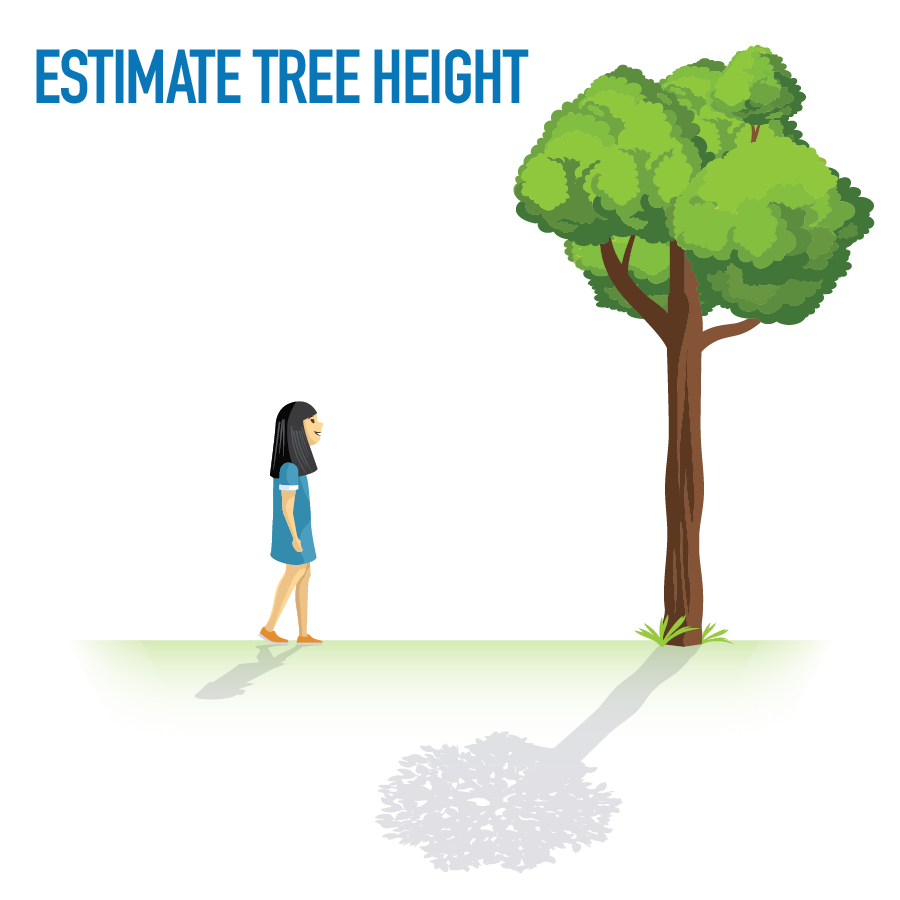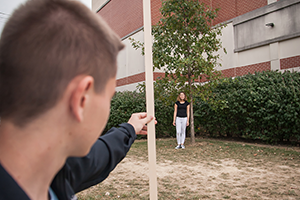Explore tree structure and scale by using different methods to measure them.
In this activity, children will measure trees in different ways and become familiar with tree scale and structure. They will also learn the importance of standard units of measure and measuring techniques.
Doing the Activity
Trees come in various shapes and sizes. Take children outside and ask them how they might measure something without a tool like a measuring tape. Then challenge children to measure small outdoor
objects (leaves, branches, rocks) using their own body parts: a foot, hand, arm, or finger.

Select a tree to measure. Guide children to your selected tree and ask them to estimate the following:
- Height
- Circumference
- Diameter at Breast Height (DBH)
- Width of Canopy (or Crown Spread)
Depending on the age and ability of the children, you may want to provide a ruler or five-foot piece of string for assistance. You can request that calculations be estimated in body measurements (hand spans, arm lengths, etc.) or scientific units of measure (feet, meters, etc.)
Ask: Why might it be useful to measure trees?
On a sunny day, show children how to measure shadows and use a ratio comparison to determine tree height. The mathematical proportions are outlined in the box below. Invite children to practice using the illustrated example.
Download the Activity
Get the Full Activity
This family activity is adapted from Project Learning Tree’s Explore Your Environment:K-8 Activity Guide.
All PLT activities are copyright protected. Please remember to reproduce responsibly.
Click here for our Content Reprint and Adaptation Policy.



